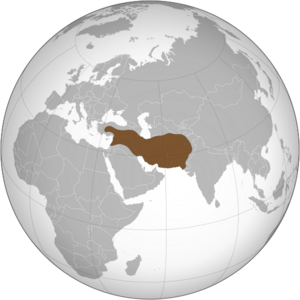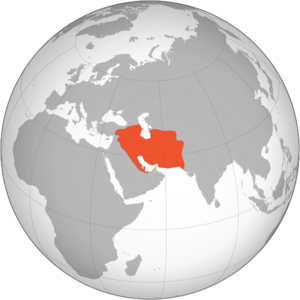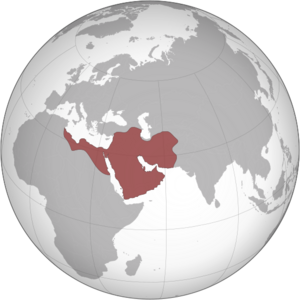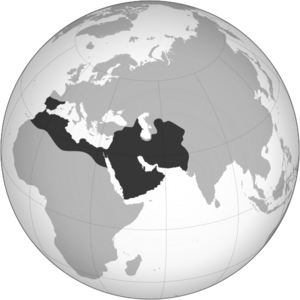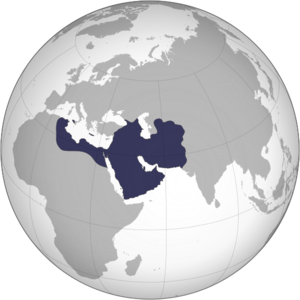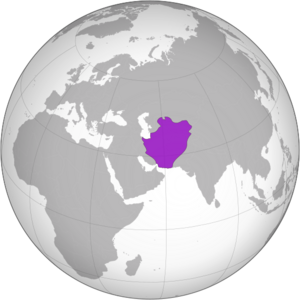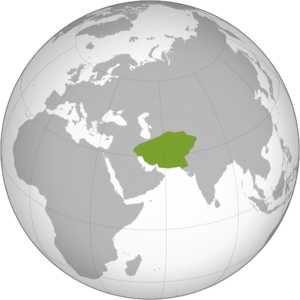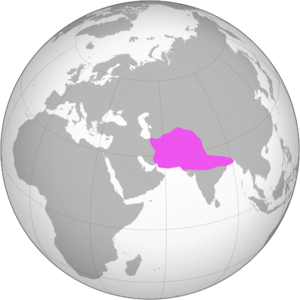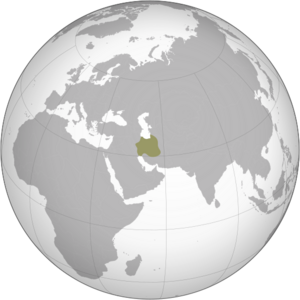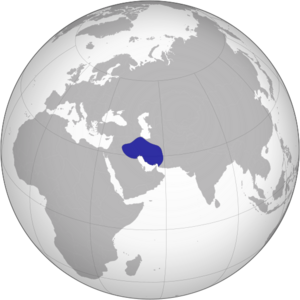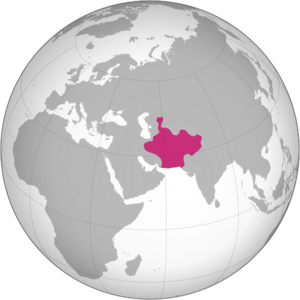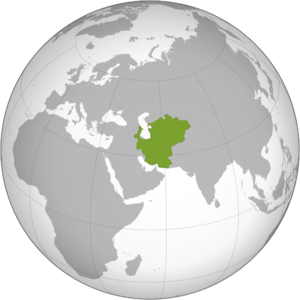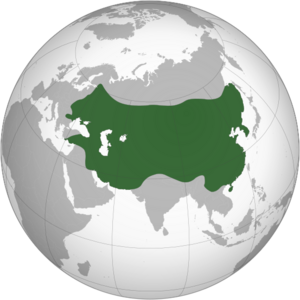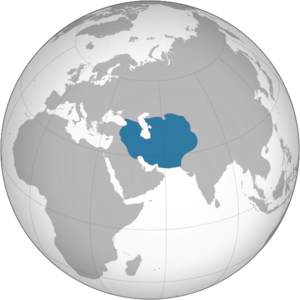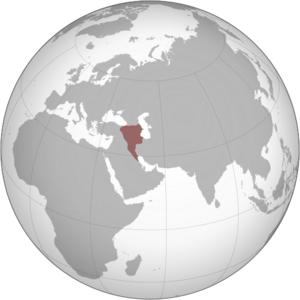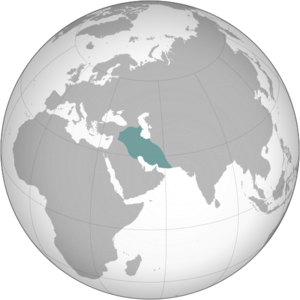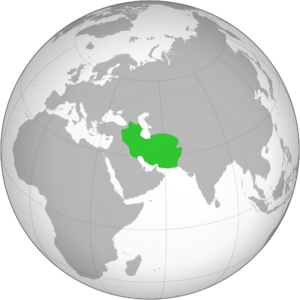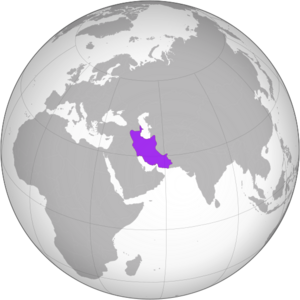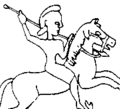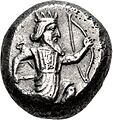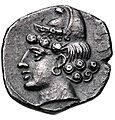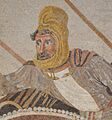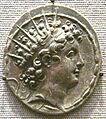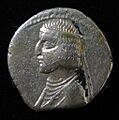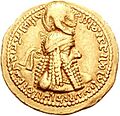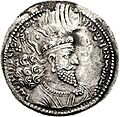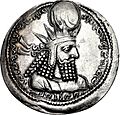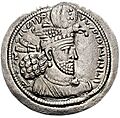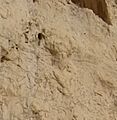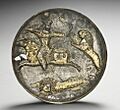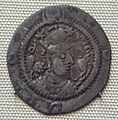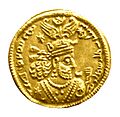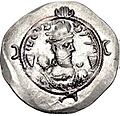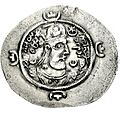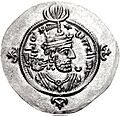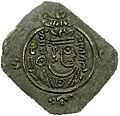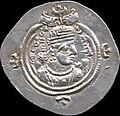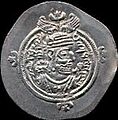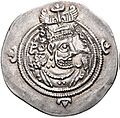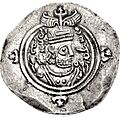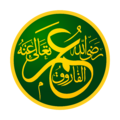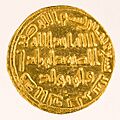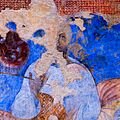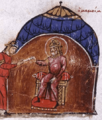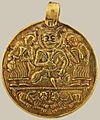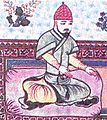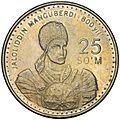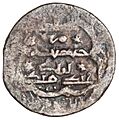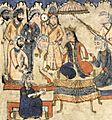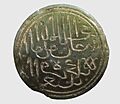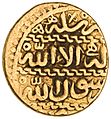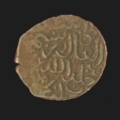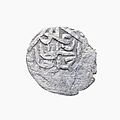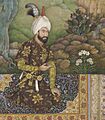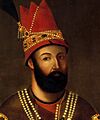List of monarchs of Persia facts for kids
Quick facts for kids Shah of Iran |
|
|---|---|
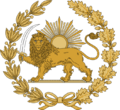
Lion and Sun
Emblem of Imperial Persia/Iran |
|

|
|
| Details | |
| Style | Shah Shahanshah |
| First monarch |
|
| Last monarch | Mohammad Reza Pahlavi 1941–1979 (as Shah of Iran) |
| Formation | 671 BC |
| Abolition | 11 February 1979 |
| Residence | Apadana Tachara Palace of Darius Palace of Ardashir Taq Kasra Ālī Qāpū Palace Hasht Behesht Golestan Palace Sa'dabad Palace Niavaran Palace |
| Appointer | Hereditary |
| Pretender(s) | Reza Pahlavi |
This article tells the story of the kings and queens who ruled Iran (also known as Persia) for thousands of years. It starts around 678 BC with the Medes and goes all the way to 1979, when the Pahlavi dynasty ended.
Contents
- Early Kingdoms: Medes and Achaemenids
- Macedonian and Seleucid Rule
- Parthian and Sasanian Empires
- Islamic Dynasties of Iran
- Rashidun Caliphate (642–661)
- Umayyad Caliphate (661–750)
- Abbasid Caliphate (748–861)
- Samanid Empire (819–999)
- Saffarid Kingdom (861–1003)
- Ghurid Kingdom (879–1215)
- Ziyarid Kingdom (928–1043)
- Buyid Kingdom (934–1062)
- Ghaznavids Empire (977–1186)
- Seljuk Empire (1037–1194)
- Khwarazmian Empire (1153–1220)
- Mongol and Turkic Dynasties
- Modern Persian Empires
- Images for kids
- See also
Early Kingdoms: Medes and Achaemenids
Iran has a very long history of powerful rulers. Let's explore some of the most important ones.
The Median Kingdom (678–549 BC)
The Medes were one of the first major groups to form a kingdom in ancient Iran. Their rulers were:
- Deioces (700–678 BC): He was the first known ruler of the Medes.
- Phraortes (678–625 BC): Son of Deioces, he helped the Medes break free from Assyrian rule.
- Cyaxares (624–585 BC): Son of Phraortes, he was a very important Median king.
- Astyages (585–549 BC): Son of Cyaxares, he was the last king of the Medes.
The Mighty Achaemenid Empire (559–334 BC)

The Achaemenid Empire was one of the largest empires in ancient history. It was founded by Cyrus the Great.
- Cyrus the Great (559–530 BC): He was a truly legendary king. He started as the King of Anshan and then created the first huge Persian Empire. He was known for being fair and respectful of different cultures.
- Cambyses II (530–522 BC): Son of Cyrus the Great, he conquered Egypt.
- Bardiya (522 BC): He ruled briefly, but some say he was an imposter.
- Darius the Great (522–486 BC): A very powerful king who expanded the empire even further. He organized the empire well and built many famous structures.
- Xerxes the Great (485–465 BC): Son of Darius I, he is famous for his wars against the ancient Greeks.
- Artaxerxes I (465–424 BC): Son of Xerxes I.
- Darius II (424–404 BC): Son of Artaxerxes I.
- Artaxerxes II (404–358 BC): Son of Darius II.
- Artaxerxes III (358–338 BC): Son of Artaxerxes II.
- Darius III (336–330 BC): The last Achaemenid king. He was defeated by Alexander the Great.
Macedonian and Seleucid Rule
After the Achaemenid Empire, Persia came under the rule of new powers.
Alexander the Great and His Successors (336–306 BC)
- Alexander the Great (336–323 BC): A famous conqueror from Macedonia who defeated Darius III and ended the Achaemenid Empire. He was king of Macedonia from 336 BC.
- Philip III (323–317 BC): Half-brother of Alexander the Great.
- Alexander IV (323–309 BC): Son of Alexander the Great, he was king of Macedonia.
The Seleucid Empire (311–129 BC)
After Alexander's death, his generals divided his empire. One of them, Seleucus, founded the Seleucid Empire, which ruled over Persia for a long time.
- Seleucus I Nicator (311–281 BC): He was one of Alexander's generals and founded the Seleucid Empire. He became king in 306 BC.
- Antiochus I Soter (281–261 BC): Son of Seleucus I.
- Antiochus III the Great (223–187 BC): A powerful Seleucid king who tried to restore the empire's former glory.
Parthian and Sasanian Empires
These two empires were major powers in ancient Iran, bringing back Persian rule.
The Parthian Empire (247 BC – AD 228)
The Seleucid Empire slowly lost control of Persia. The Parthians, led by the Arsacid dynasty, took over and created a new empire.
- Arsaces I (247–211 BC): He founded the Arsacid dynasty, which ruled the Parthian Empire.
- Mithridates I (167–132 BC): A great Parthian king who expanded the empire significantly.
- Mithridates II (121–91 BC): Another powerful Parthian king, known as "The Great King of Kings."
The Sasanian Empire (224–651)
The Sasanian Empire was the last great Persian empire before the Muslim conquest. It was a very strong and influential empire.
- Ardashir I (224–242): He founded the Sasanian Empire.
- Shapur I (240–270): Son of Ardashir I, he was a powerful king who fought against the Roman Empire.
- Khosrau I (531–579): Known as "Anushiravan the Just," he was one of the most famous Sasanian kings, known for his wisdom and reforms.
- Khosrau II (590–628): Also known as "Aparviz," he was a very ambitious king who fought many wars.
- Yazdegerd III (632–651): The last Sasanian king. His empire fell to the Muslim armies.
Islamic Dynasties of Iran
After the Sasanian Empire, Iran became part of the larger Islamic world, ruled by different caliphates and local dynasties.
Rashidun Caliphate (642–661)
The Rashidun Caliphate was the first Islamic government. Their forces conquered Persia.
- Umar (642–644): He was the second Caliph and his forces conquered Persia.
- Uthman (644–656): The third Caliph.
- Ali (656–661): The fourth Caliph, also known as Maula Ali.
- Al-Hasan (661): Son of Caliph Ali, he ruled briefly.
Umayyad Caliphate (661–750)
The Umayyad Caliphate was a large Islamic empire that ruled over Persia.
- Muawiyah I (661–680): He founded the Umayyad Caliphate.
- Abd al-Malik (685–705): A strong Umayyad Caliph who made many important changes.
- Hisham (724–743): He built many schools and mosques.
Abbasid Caliphate (748–861)
The Abbasid Caliphate took over from the Umayyads and moved the capital to Baghdad. They ruled Persia until 861.
- As-Saffah (748–754): He founded the Abbasid Caliphate.
- Al-Mansur (754–775): A famous Arab Caliph who built the city of Baghdad.
- Harun al-Rashid (786–809): The most famous Abbasid Caliph, known from the stories of "One Thousand and One Nights."
Samanid Empire (819–999)
The Samanids were a Persian dynasty that became powerful in Central Asia and parts of Iran.
- Ismail Samani (892–907): A very important Samanid ruler who expanded the empire.
Saffarid Kingdom (861–1003)
The Saffarids were another Persian dynasty that rose to power in eastern Iran.
- Ya'qub ibn al-Layth al-Saffar (861–879): He founded the Saffarid dynasty.
Ghurid Kingdom (879–1215)
The Ghurids were a dynasty from Afghanistan that expanded into parts of Iran and India.
- Ghiyath al-Din Muhammad (1163–1202): A powerful Ghurid Sultan.
- Mu'izz al-Din (1173–1206): He conquered much of northern India.
Ziyarid Kingdom (928–1043)
The Ziyarids were a local Iranian dynasty that ruled in northern Iran.
- Mardavij (928–934): He founded the Ziyarid dynasty.
Buyid Kingdom (934–1062)
The Buyids were a powerful Persian dynasty that took control of much of Iran and Iraq.
- Adud al-Dawla (949–983): A very strong Buyid ruler who expanded his power and was known as "Shahanshah" (King of Kings).
The Ghaznavids were a Turkic dynasty that ruled from Ghazni (in modern-day Afghanistan) and controlled large parts of Iran.
- Mahmud (998–1030): He was a very famous Ghaznavid ruler who made many conquests.
Seljuk Empire (1037–1194)
The Seljuks were a Turkic group who created a vast empire that included Iran.
- Tughril I (1029–1063): He founded the Great Seljuk Empire.
- Alp Arslan (1063–1072): A famous Seljuk Sultan who won a major victory against the Byzantine Empire.
- Malik Shah I (1072–1092): Under his rule, the Seljuk Empire reached its largest size.
Khwarazmian Empire (1153–1220)
The Khwarazmian Empire grew powerful in Central Asia and then expanded into Iran.
- Tekish (1172–1200): A strong Khwarazmshah.
- Muhammad Sanjar (1200–1220): The last major Khwarazmshah, whose empire was destroyed by the Mongols.
Mongol and Turkic Dynasties
The Mongol invasions changed the face of Iran, leading to new rulers.
Mongol Empire (1220–1256)
The Mongol Empire, led by Genghis Khan, conquered vast lands, including Iran.
- Genghis (1220–1227): The founder of the Mongol Empire, a legendary conqueror.
- Ögedei (1229–1241): Son of Genghis Khan, he continued the expansion of the empire.
Ilkhanate (1256–1357)
The Ilkhanate was a Mongol kingdom that ruled over Iran after the main Mongol Empire split.
- Hulagu (1256–1265): Grandson of Genghis Khan, he founded the Ilkhanate.
- Ghazan (1295–1304): A powerful Ilkhanid ruler who converted to Islam.
- Öljaitü (1304–1316): Brother of Ghazan.
- Abu Sa'id (1316–1335): The last strong Ilkhanid ruler.
Timurid Empire (1370–1467)
The Timurid Empire was founded by Timur, a great conqueror who aimed to restore the Mongol Empire.
- Timur (1370–1405): Also known as Tamerlane, he was a famous and powerful conqueror who built a vast empire.
- Shah Rukh (1405–1447): Son of Timur, he ruled a large and stable empire, known for its cultural achievements.
- Ulugh Beg (1447–1449): Grandson of Timur, he was a famous astronomer and scholar.
Qara Qoyunlu and Aq Qoyunlu (1375–1497)
These were two rival Turkic groups that ruled parts of Iran.
Qara Qoyunlu (Black Sheep Turkomans)
- Qara Yusuf (1388–1420): A key leader of the Qara Qoyunlu.
- Jahan Shah (1438–1467): A powerful Qara Qoyunlu ruler who expanded their territory.
Aq Qoyunlu (White Sheep Turkomans)
- Uzun Hassan (1453–1478): A strong leader of the Aq Qoyunlu who defeated the Qara Qoyunlu.
Modern Persian Empires
These dynasties shaped modern Iran.
Safavid Empire (1501–1736)
The Safavid Empire was a very important period in Iranian history. It established Shia Islam as the official religion of Iran.
- Ismail I (1501–1524): He founded the Safavid Empire and made Shia Islam the state religion.
- Tahmasp I (1524–1576): Son of Ismail I, he ruled for a long time and faced many challenges.
- Abbas I the Great (1587–1629): He was one of the greatest Safavid rulers. He made the empire very strong and developed arts and trade.
- Suleiman I (1666–1694): A later Safavid Shah.
- Sultan Husayn (1694–1727): The last Safavid Shah before a period of Afghan rule.
- Tahmasp II (1722–1740): He tried to restore Safavid rule after the Afghan invasion.
Afsharid Empire (1736–1796)
The Afsharid Empire was founded by a brilliant military leader who took control after the Safavids weakened.
- Nader Shah (1736–1747): A very powerful military genius who became Shah. He conquered many lands and was known as "the Napoleon of Persia."
Zand Kingdom (1751–1794)
The Zand dynasty ruled parts of Iran after the Afsharids.
- Karim Khan Zand (1751–1779): He was a kind and fair ruler, known as "Vakil e-Ro'aayaa" (Regent of the People). He brought peace and prosperity to Iran.
- Lotf Ali Khan (1789–1794): The last Zand ruler, known for his bravery in fighting against the Qajars.
Qajar Empire (1794–1925)
The Qajar dynasty ruled Iran for over a century, facing many changes and challenges.
- Agha Mohammad Shah (1794–1797): He founded the Qajar dynasty and unified Iran.
- Fath-Ali Shah (1797–1834): A Qajar Shah known for his long beard and many portraits.
- Naser al-Din Shah (1848–1896): He was one of the longest-reigning Qajar kings. He tried to modernize Iran.
- Ahmad Shah (1909–1925): The last Qajar Shah, who was deposed.
Pahlavi Empire (1925–1979)
The Pahlavi dynasty was the last royal family to rule Iran.
- Reza Shah (1925–1941): He founded the Pahlavi dynasty and began many modernizing reforms in Iran.
- Mohammad Reza Shah (1941–1979): Son of Reza Shah, he was the last Shah of Iran. He was deposed in 1979.
Images for kids
See also
- Achaemenid Empire
- History of Iran
- List of ancient Persians
- List of royal consorts of Persia
- Monarchism in Iran




